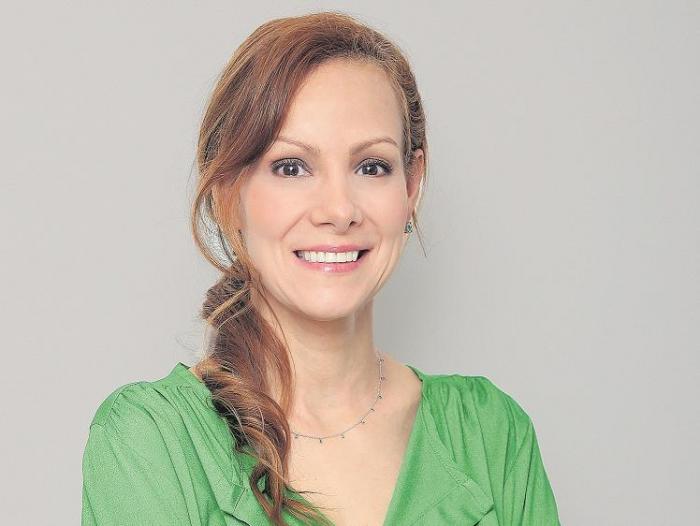
Taken from: www.portafolio.co
Claudia Ximena Calero, president of Asocaña, says that the sugar sector closed 2020 with positive figures, but there is uncertainty for 2021.
The Colombian sugar industry closed 2020 with positive figures, and although expectations for 2021 are optimistic, there is growing uncertainty regarding the direction of product prices in the international market.
Claudia Ximena Calero, president of Asocaña, spoke with Portafolio about the sugar business and the national production of ethanol.
How did 2020 end for the sector?
In 2020 we managed to maintain the results of a year ago, that is, 2,2 million tons of sugar and 382 million liters of ethanol, a product of processing 23,5 million tons of cane. National sugar consumption registered a 2,3% drop in 2020.
Sugar exports amounted to 732.000 tonnes last year, while imports totaled 262.000 tonnes. Ethanol production registered a 14% drop, while sales of this same product decreased 22%.
Was ethanol the one that took the hit of the pandemic?
With ethanol production we are experiencing an inventory emergency, generating large cost overruns for storage, as there was nowhere to store the biofuel.
What caused this situation?
On the one hand, the country decreased fuel consumption due to the inactivity of transportation. Additionally, ethanol imports amounted to 211 million liters. The problem is that external companies are not required to meet the same technical and environmental compliance requirements that the national product requires.
There is an unequal treatment in quality criteria, in favor of the product that enters from other countries. For example, they are not required to prove their carbon footprint. It is key to regulate the purchase and sale of biofuel.
We need a firm contracting scheme for ethanol, which guarantees the national industry to schedule its production, with the certainty that this volume will be absorbed by the local market.
Was the sector able to keep its employees last year?
So is. The sector was not closed because it belongs to the food chain, but was impacted by lower demand due to inactivity in hotels and restaurants.
The mills generate 286.000 direct and indirect jobs, and all remained intact during the pandemic. Furthermore, thanks to investments in social and infrastructure projects, last year we generated 2.384 jobs in works related to tertiary roads developed by the industry, that is, in construction and maintenance.
How did Colombian sugar exports behave in 2020?
Good. Last year we exported 740.000 tons, that is, 7% more than in 2019. The income for this concept was 350 million dollars. Exports represented 33% of the national sugar production.
What do you think of the campaigns against the consumption of sugar?
We are sure that what there is is a lack of information or it is provided in an incomplete way.
For this reason, last November we launched the 'Sugar with Balance' strategy. It is an informative and educational work on the proper way to consume sugar. This is an energy that the body needs. We are talking about a 100% natural food. Consumption levels depend on the activity that people develop. For example, if someone has little movement in their routine, they should consume less sugar. But if it is the opposite, the demand must be higher. We are talking about a strategy and not a campaign.
And how do you plan to bring that message to the consumer?
We are working with the medical community, academics, parents, youth and children, to give them objective information on the effects of sugar consumption. We believe that food should be a balance between different types of nutrients. In addition, we are making progress in teaching consumers to understand the information on the labels.
What is the energy self-generation plan for the mills going about?
Industry has always used by-products to generate its own energy. The bagasse is used for the boilers of the mills. Currently, we are adding electrical energy generated by bagasse biomass, which we take to the National Interconnected System. We produce 1.615 gigawatts in total, and of that figure, 734 gigawatts go to the national network.
We are the typical circular economy model, that is, we use all by-products and derivatives in the same operation of the mills and in the sugarcane crops.
How does 2021 look for the sector?
It is clear that we depend on the reactivation of the economy and this, in turn, is tied to the results of the vaccination plan against the coronavirus. This picture is clear for the sugar industry as it is for ethanol production.
However, prices are expected to decline due to overproduction in India and the subsidies that the Indian government provides to its producers. We also depend on what happens with the harvest in Brazil. However, we view the year with optimism.
Source: Portfolio February 11, 2021 - 08:00 pm
Available online:
https://www.portafolio.co/economia/el-azucar-es-un-energetico-que-el-cuerpo-necesita-asocana-549074
Disclaimer Disclaimer
Cenicaña reproduces this note for no commercial purpose as a service to its readers, recognizing the ownership of the content at the head of the respective source and providing the URL where the original document is available. Cenicaña does not guarantee that the information provided here is always up-to-date, accurate, or complete, or that such information is free of third-party intellectual property rights or exempt from copyrights.












